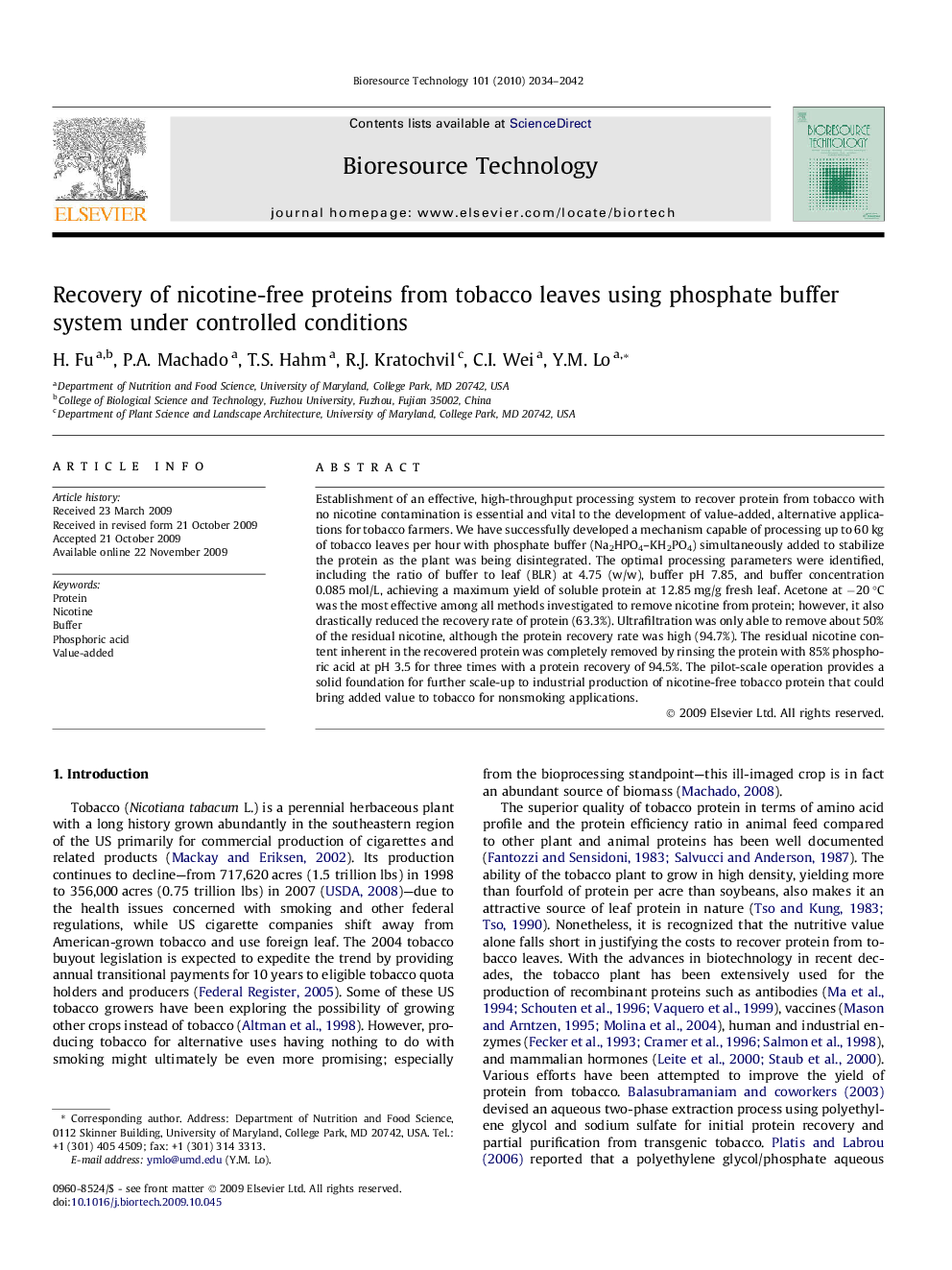| Article ID | Journal | Published Year | Pages | File Type |
|---|---|---|---|---|
| 682790 | Bioresource Technology | 2010 | 9 Pages |
Establishment of an effective, high-throughput processing system to recover protein from tobacco with no nicotine contamination is essential and vital to the development of value-added, alternative applications for tobacco farmers. We have successfully developed a mechanism capable of processing up to 60 kg of tobacco leaves per hour with phosphate buffer (Na2HPO4–KH2PO4) simultaneously added to stabilize the protein as the plant was being disintegrated. The optimal processing parameters were identified, including the ratio of buffer to leaf (BLR) at 4.75 (w/w), buffer pH 7.85, and buffer concentration 0.085 mol/L, achieving a maximum yield of soluble protein at 12.85 mg/g fresh leaf. Acetone at −20 °C was the most effective among all methods investigated to remove nicotine from protein; however, it also drastically reduced the recovery rate of protein (63.3%). Ultrafiltration was only able to remove about 50% of the residual nicotine, although the protein recovery rate was high (94.7%). The residual nicotine content inherent in the recovered protein was completely removed by rinsing the protein with 85% phosphoric acid at pH 3.5 for three times with a protein recovery of 94.5%. The pilot-scale operation provides a solid foundation for further scale-up to industrial production of nicotine-free tobacco protein that could bring added value to tobacco for nonsmoking applications.
